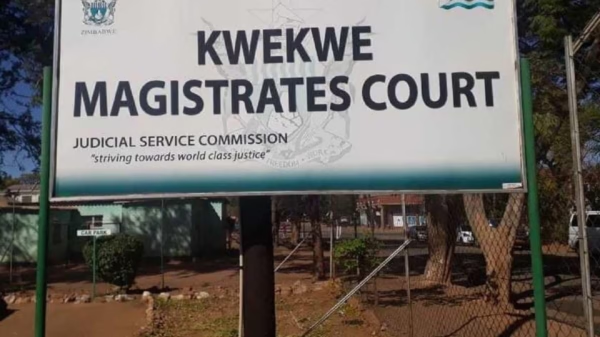Owning a house can create a stable base for you to build a financial future upon, but owning a house is not enough. You also must be able to protect your investment in that stable foundation you’re building.
That’s why insurance is such an important part of your financial portfolio, especially those policies that can protect your home from damage.
If you’ve had your home’s policy for a while, it can be hard to know for sure if you have the amount of coverage you need, or if you’re covered for the hazards that your home faces as the world changes around you.
Basic Insurance Coverage for Your Home
The most basic type of insurance coverage for any home is a policy commonly called homeowners insurance. These policies aren’t required by law, but are generally a condition of securing and maintaining a mortgage loan. Even if you don’t have a mortgage, though, they’re invaluable to homeowners of every type. They cover the bigger hazards houses can face in most locations, although they do not generally cover flooding.
“Homeowners insurance may be required by a lender if you take out a mortgage, but you should always have a policy, even after your home is paid off,” says Michael Orefice, senior vice president of operations at SmartFinancial in Costa Mesa, California. “Homeowners insurance is not intended for small fixes around the house, but to repair or replace costly damages caused by perils named in a policy. If disaster strikes, and your most valuable assets are destroyed, homeowners insurance helps you get your life together again and saves you tens of thousands of dollars doing it.”
A few examples of common things that homeowners insurance covers are storm damage, fires and burglary. After a deductible payment, the insurance will pick up the vast majority of the cost of repairs, in many cases.
“It may be difficult to come up with thousands of dollars to replace your shingle roof if it is damaged by a hail storm,” says Nicole Brock, agent and owner at Nicole Brock and Associates LLC in Springfield, Missouri. “Perils like this are included so that homeowners can turn in a claim and have assistance with paying for these large out-of-pocket incidents. At my office I have seen everything from claims for repairs done to flooring and drywall from water damage in a basement to a list of stolen items being replaced.”
However, not everything is included in a basic homeowner insurance policy, Brock explains. “Typically exclusions will include damage from a sinkhole collapse, earthquake or earth movement, and your everyday maintenance issues like your hot water tank not working.”
Optional Coverages to Consider
A basic homeowners insurance policy doesn’t cover everything that might put your home or financial future at risk, but it does cover a great number of general situations. More specific optional insurance coverages may also be needed, depending on your lifestyle and the local climate. It’s important to work with your agent to determine exactly what coverages you need in your area.
“Optional policies for homeowners to consider are usually based on the needs that are specific and unique to that customer, their family and their property location,” says Craig Eagleson, vice president of national sales at Incenter Insurance Solutions in Parsippany, New Jersey. “For example, if you don’t live in a flood zone or an area known for earthquakes, you may not need as much protection for these kinds of events.
“Life changes can also influence adjustments to your policies, for instance, if you get married, have kids or are now an empty nester. Additionally, if you own very expensive personal items like jewelry, or an art or wine collection, you may want to exercise the option to increase your coverage in case they are damaged or stolen.”
How Do You Know if You Have Enough Coverage?
Even with the best insurance agent, over time you may not have enough insurance to properly protect your home and belongings, especially when costs continue to climb dramatically. It’s important to keep track of the value of your home and possessions as well as what it would cost to rebuild or replace them, and have an appropriate amount of coverage. You should carefully review your own policy from time to time, even if your insurance agent does periodic reviews with you.
“Your dwelling coverage is the most important amount to look at,” says Orefice. “It should be enough to completely rebuild your home and allow you to replace your damaged personal property. Up to 70% of your dwelling coverage amount will cover your personal possessions, unless your policy only allows, say, 50%, depending on the policy you buy. Up to 20% of your dwelling coverage will help cover expenses, like hotel stays.
“Your liability limit is also something you should look at; it often defaults to $100,000. Consider whether or not this will cover you if you’re faced with an injured guest or a lawsuit as a result of it. You can always increase liability limits or buy an umbrella policy that will extend your liability limits on your home insurance as well as your car insurance.”
Reducing the Cost of Home Insurance
Having insurance is the responsible thing to do, and you’ll be glad you have it if something bad happens, but it can be hard to find a balance between what you want to pay and what it takes to cover your property completely.
“When it comes to homeowners policies, cheaper is not always better,” says Eagleson. “You need to determine if you have adequate replacement costs, liability and personal belongings coverage based on the full value of your items. Most people want to cut corners for a cheaper policy but when tragedy strikes, they are out thousands if they don’t have proper policies in place or if they have extremely low coverage amounts. I have witnessed this firsthand, and it is a terrible feeling.”
Why is insurance so expensive? There are a lot of reasons, but it’s largely to do with the cost of everything increasing. When lumber goes up, the cost to fix your house goes up, too. Fortunately, there are ways to help lower your insurance rates.
“Reducing the cost of your homeowners insurance policy can be really difficult to do right now,” says Brock. “That’s not the answer most want to hear, but that is our reality. With increasing cost in materials, labor and fuel all hitting major highs, the client (including myself) has to pay the cost for these things. The cost to replace a roof, or the cost to do mitigation after water or fire damage are not the same as they were 2 to 3 years ago.
“Insurance companies pay those bills when clients have a claim, and clients pay the premium to have the coverage. A few ways to reduce your cost are to not turn in small claims, bundle your home insurance with your car insurance, consider carrying a higher deductible, maximize your discounts with longevity, adding alarm systems, and being claim free.”
In other news,
Reports Say Stunner Has Been Arrested In Durban After Bashing New Bae
It has been reported that Rapper Stunner has been arrested in Durban after he physically assaulted his girlfriend.

The issue is said to have started when Stunner’s girlfriend was approached by another man and she gave him her number without hesitation.
This did not sit well with the rapper who…continue reading

For comments, Feedback and Opinions do get in touch with our editor on WhatsApp: +44 7949 297606.






































